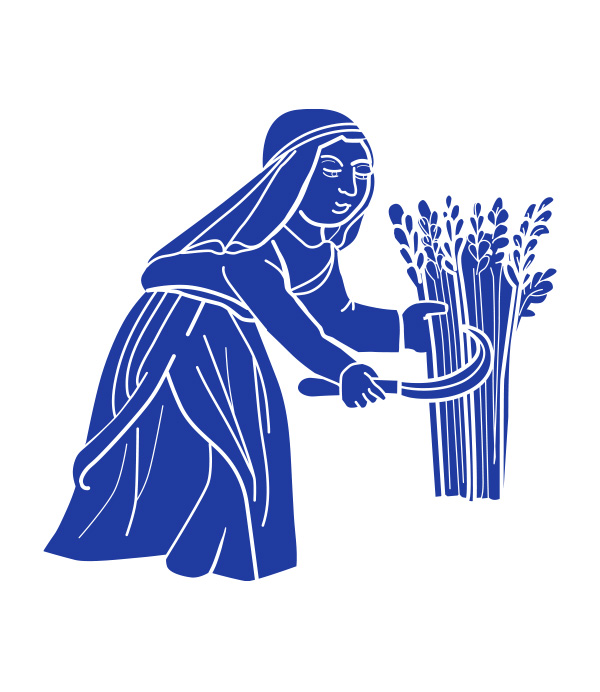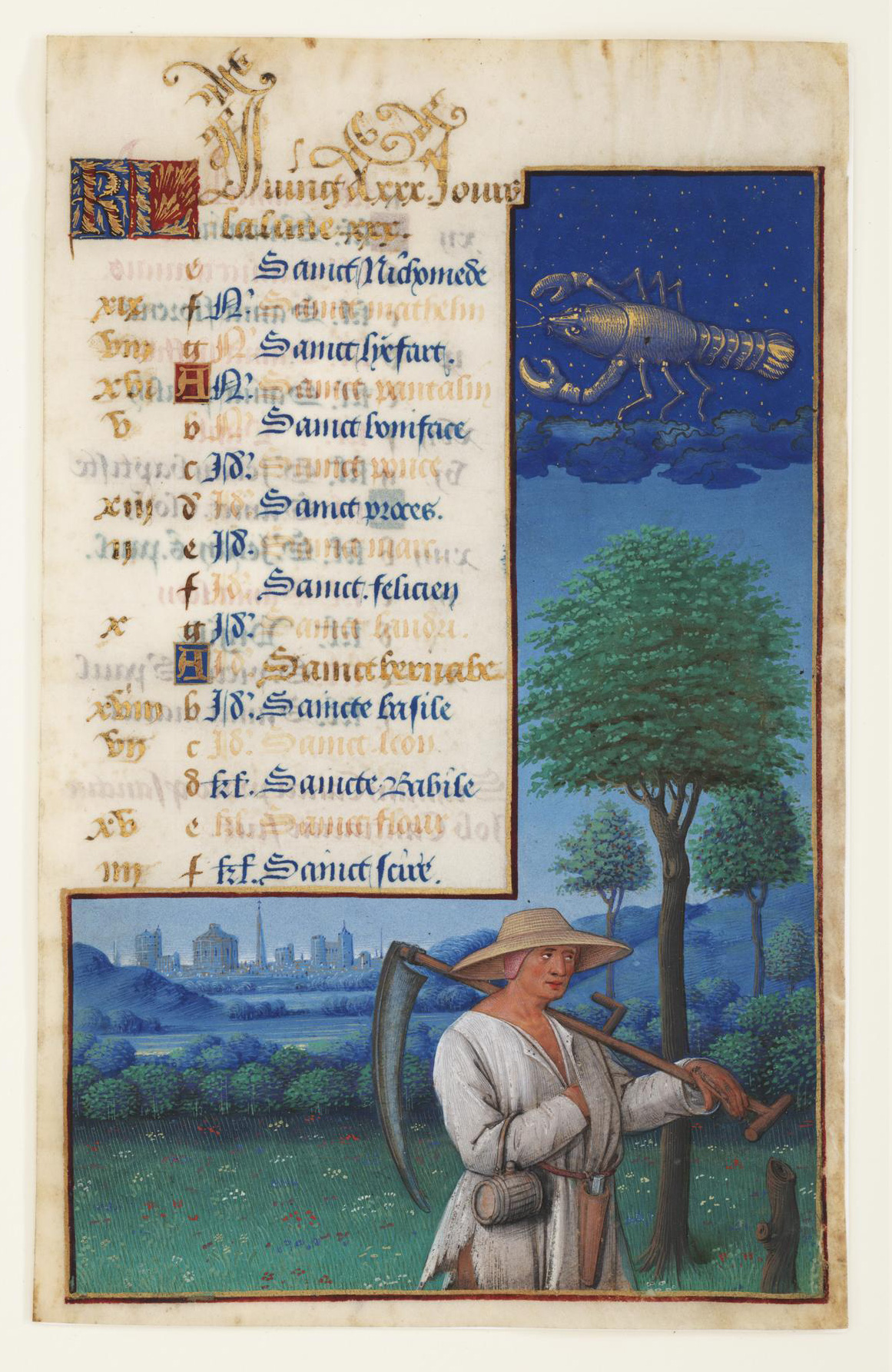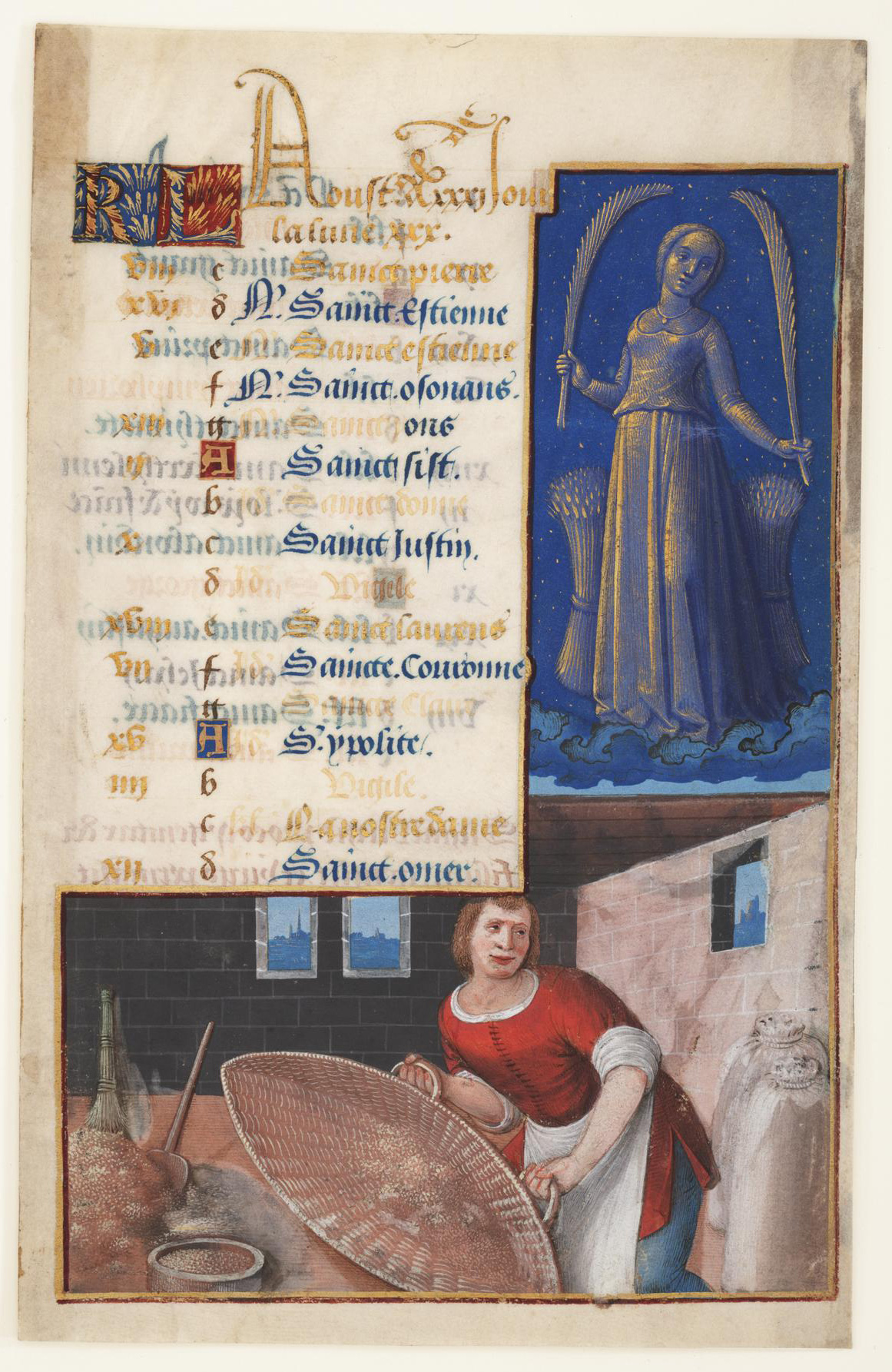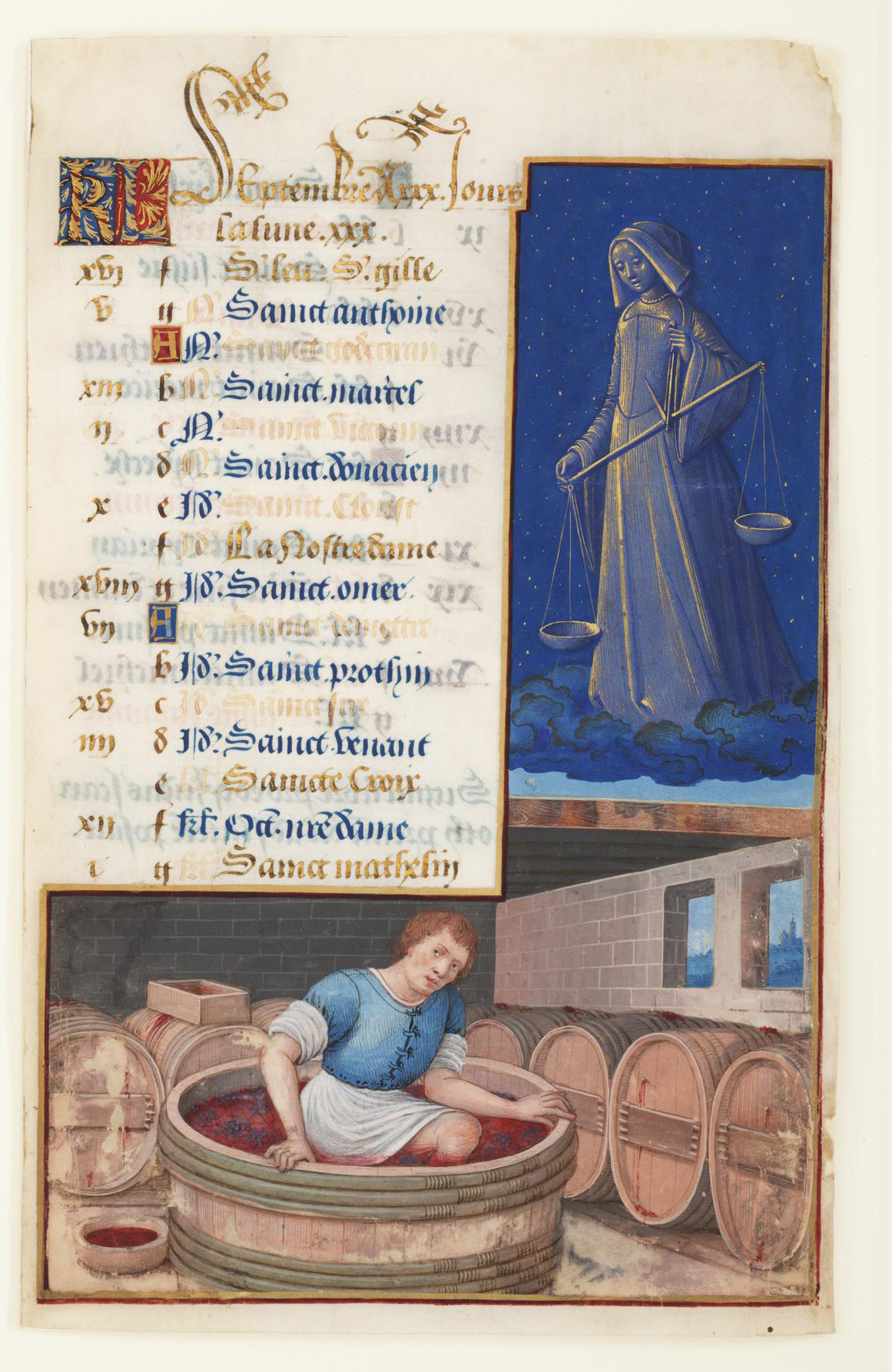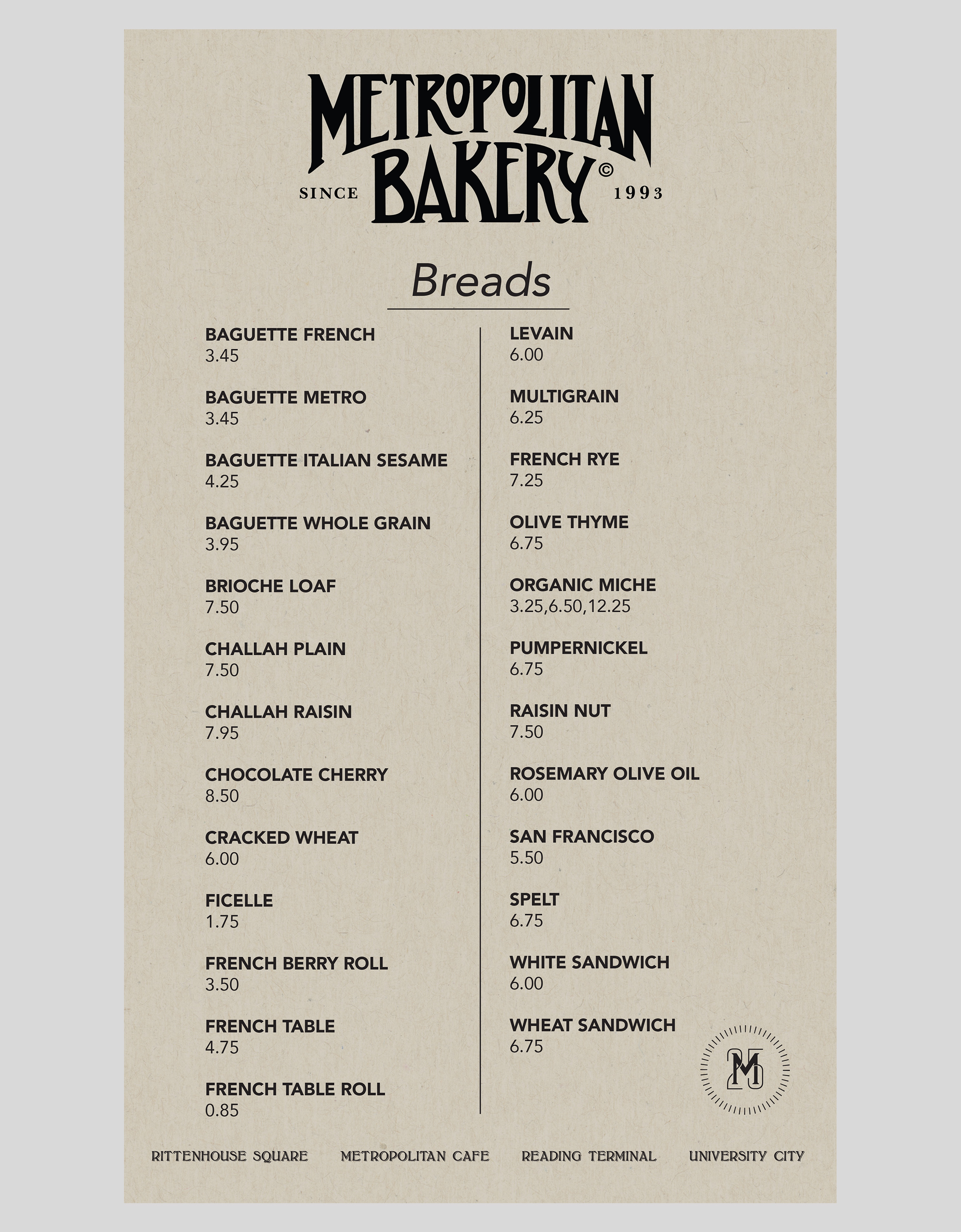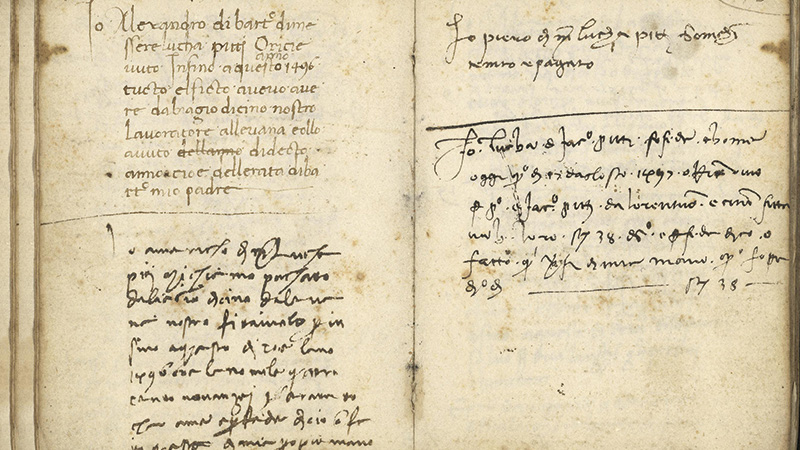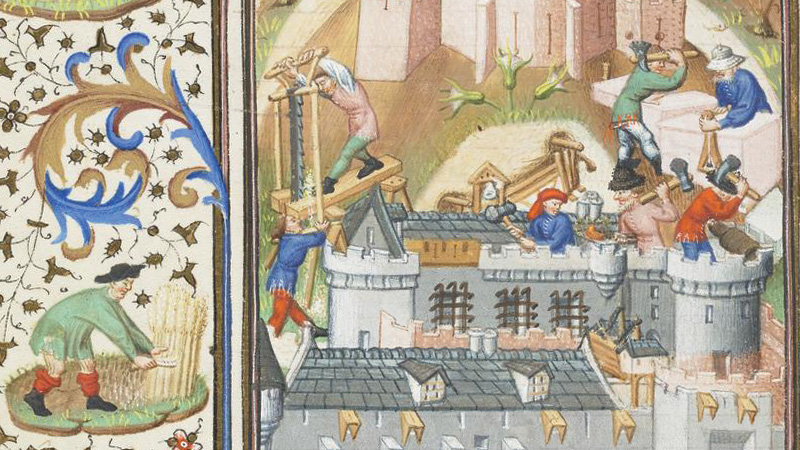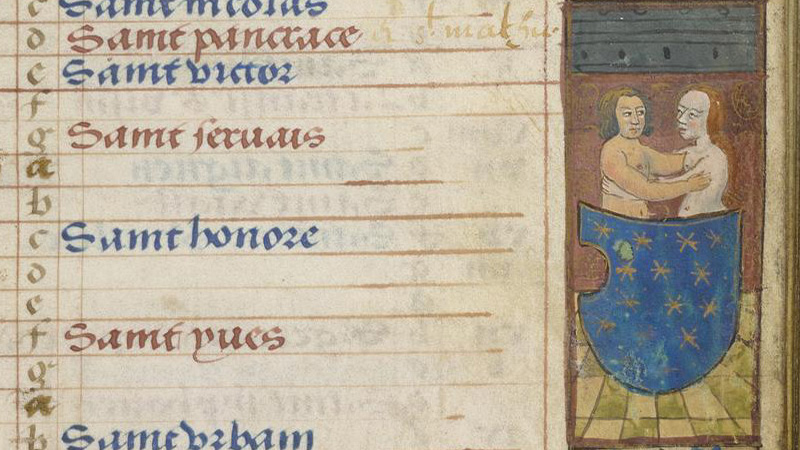Labors of the Month
The Labors of the Months are a medieval cycle of 12 pictures that link rural activities such as planting crops and harvesting grapes to the months of the year. The specific labors chosen in a cycle may vary depending on where in Europe they were made. In illuminated books of hours, the Labors of the Months would be in the first section, as part of the calendar, where holidays and feast days for specific saints are listed. Often each month would have its own page, and each page would include the month’s labor paired with its complementary zodiac symbol. As these books were made for the wealthy, the Labors of the Months depict idealized versions of rural and peasant work.
Louis XII was king of France from 1498 to 1515. These four framed pages are leaves from a very lavish book of hours made to celebrate his coronation. The book was painted by Jean Bourdichon, one of the most important manuscript illuminators and a favorite painter in the French court. The paintings—known as miniatures—are remarkable for their rich, rare pigments and how closely the subjects resemble those in oil portraits, rather than being more stylized, as was often the case in manuscript illumination.
Although the practice is frowned upon today, medieval manuscripts have been cut apart, reused, and resold throughout history. The hours of Louis XII was one of the greatest illuminated manuscripts to come out of the French Renaissance, but it was broken apart around 1700, and much of it has been lost. Sixteen miniatures survive, along with some pages of text, in libraries and museums in the United States and Europe. These four leaves, all part of the Free Library of Philadelphia’s collection, come from the book’s calendar.
Each leaf includes the month’s feast days, written in alternating blue and now-faded red, with important feasts in gold. But a further hint of the extravagance of this book is how the bulk of the page is dedicated to sumptuous decoration: full cycles for the Labors of the Month coupled with the signs from the zodiac. February (Pisces) shows a man keeping warm and preparing to feast; June (Cancer) depicts the mowing of hay; August (Virgo) shows grain being prepared after harvest; and September (Libra) shows someone crushing grapes to prepare them for fermentation.


